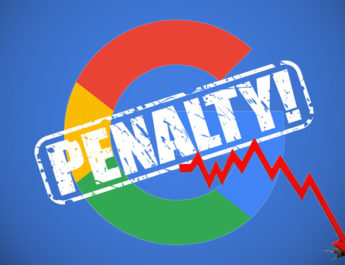Content is a critical tool for any business looking to stand out online.
Whether you’re producing content for your TikTok channel or writing blogs for your website, the right strategy gets your eyes on your brand and helps you to connect with customers.
Though content is one of the must-have parts of many marketing strategies for companies today, it’s also something business leaders often regard as being reserved for larger, more “mass-market” companies.
The reality is that any business from any niche can connect with its audience through effective content. All you need is the right strategy.
Today, we’re going to be exploring some of the ways that you can build an effective plan for niche content marketing.
Table of Contents
Identify Your Unique Value
Creating content for a niche customer is often even more beneficial than designing a strategy for a broader audience.
That’s because when you target specific customers, you reduce the amount of competition you need to fight against and boost your chances of reaching the right customers.
Of course, before you can start making an impact with niche content, you need to figure out what differentiates your brand.
Start by thinking about your business and what it sells.
For instance, if you’re a web design company, what do you offer that other designers can’t? Are you an expert in building apps for a certain type of business? Do you design logos and websites as part of a package?
Niche advertising is a great opportunity to drill down into the sector of people you can best serve with your solution.
Think about:
- Underserved customers that your competitors don’t target
- Areas that you specialize in or have a lot of knowledge about
- Things customers mention when leaving positive reviews about you
- Which specific problems you can solve best
Tapping into any of these will benefit your business.
Create Buyer Personas
Once you know what your unique values are, you can begin to create a picture of the sort of customer most likely to benefit from those values.
For instance, if you’ve decided that your unique selling proposition is that you can help people renovate their home on a budget, ask yourself what kind of people can benefit from that offer.
The chances are you’ll be looking at first-time homeowners or property buyers who want to renovate lots of properties at once.
Creating a buyer persona involves writing a list of all the defining characteristics that make up your ideal customer. Think about:
- Where your target audience is located
- What sort of hobbies and interests they have
- What pain points they need to solve
- What their likes and dislikes are
- Their age, gender, and other demographic details
- What kind of companies they already like
This information will shape your marketing strategy.
Identify the Right Channels for Content Distribution
With a solid idea of your target audience and the factors that make your business special, you’ll be ready to start producing your content.
Before you jump into action, ask yourself what kind of content your audience is most likely to respond to.
Will they be the kind of people who read blog posts and case studies on your website? Or are your customers more likely to respond to social media posts?
Competitive analysis can come in handy here. Looking at companies with a similar audience to you will give you an insight into the kind of channels and strategies they’re using.
You may discover that the best way to boost your sales and connect with your customers is to promote your content on several different channels, depending on who you target.
B2B brands might choose LinkedIn, email, and their website, while B2C companies use Instagram, social forums (like Reddit), and their site blog.
Conduct Keyword Research
A niche content marketing strategy involves connecting with a very specific target audience.
This audience may use different terms, questions, and languages to find the information they need, compared to a standard, broader audience.
With that in mind, you may need to work harder to determine which keywords you want to rank for.
Conducting the right keyword research in the early stages of your content marketing plan will help you boost your chances of reaching the right audience wherever they are.
Think about the kind of problems these niche customers have and how they may search for a solution.
When creating your keyword list, you could even look at the common questions your sales and marketing team gets in dealing with customers.
Optimize Content for Different Stages of the Funnel
The sales funnel is a term used to define the journey a customer goes on during their buying process.
Most customers don’t see a product and buy it instantly.
Your clients start by becoming aware of a problem. They gradually do their research, learn more about brands and solutions, and eventually make the decision to buy something.
Optimizing your content strategy to support different stages of the sales funnel is crucial.
For instance, a company selling social media marketing services might start by targeting the awareness stage.
The company might produce blogs about some ways brands can attract customers.
In the research stage, they could post use cases and blogs about social media strategies and how they drive results.
By adjusting your content to suit every stage of the funnel, you make sure that your clients can always find your website, no matter which position they’re in.
Embrace Your Niche Audience
A niche content marketing strategy is an excellent way to reach an underserved selection of customers who could take your business to the next level.
Find your niche and dedicate your time to serving their needs. The result could be more sales and greater brand loyalty.




